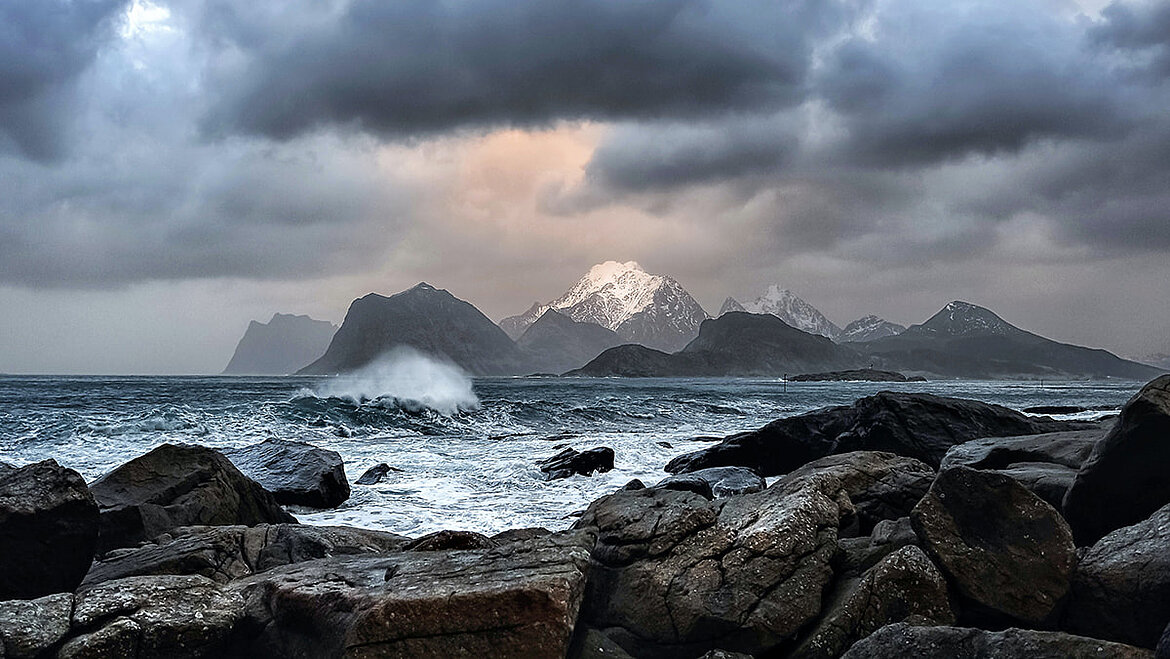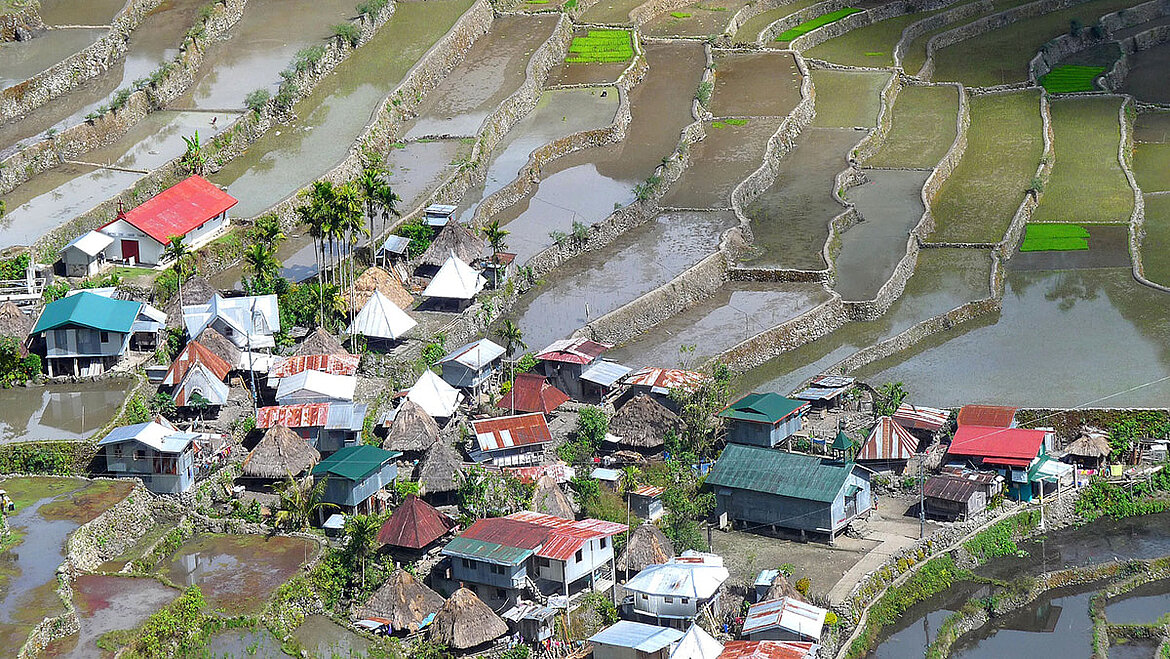The house was built in just eleven days and now provides three people with a home. It was constructed entirely of glass fibre- reinforced plastics (GRP). The use of fibreglass as a construction material for a house is revolutionary for the Asian construction industry. The floors, roof and all wall cladding are made of GRP and therefore withstand the extreme weather conditions in the Philippines.
But what makes the Philippine weather so special?

Heavy rain, heat and high humidity chracterise the weather and thus life in the Philippines. Due to its proximity to the equator and the sea, there is a tropical climate. The tropics are always humid in the south, resulting in consistently high temperatures and lots of rain all year round.
In the north, on the other hand, the south-west monsoon season brings very heavy precipitation, especially between June and October. Another challenge for the residents of the island is presented by the regular typhoons and earthquakes.
What are the usual construction methods in the Philippines?
Buildings in the Philippines usually consist of formwork blocks made of concrete and regionally produced bricks. These bricks are usually poorly manufactured and have major defects, especially in their shape. First, the structure of the building is constructed of reinforced concrete. The masonry walls are then lined with formwork bricks. If the basic framework is made of bricks, the walls are rendered in a traditional way and beautifully embellished with latex paint.
What are the important weather-specific issues affecting housing construction in the Philippines?
Housing construction in the Philippines in particular requires materials that can withstand extreme weather conditions. This means that they must be especially resistant to the heat, monsoon rain, typhoons and earthquakes. Insulation is also crucial for the climate there.
The architects of this house were also aware of this. Whilst searching for a suitable material, they came across LAMILUX glass fibre-reinforced plastics. The great potential of the composite material, especially for the Asian construction industry, lies in its properties. Of particular note here are not only the impact resistance and tensile strength, but also the UV-resistance and impermeability. GRP's excellent insulating properties also make the material stand out from other materials.
In tropical regions such as the Philippines, outside temperatures of 30°C on average lead to high energy consumption from air conditioning units. These must be used to cool interior spaces to a pleasant temperature. This is precisely where glass fibre-reinforced plastics and good insulation come into play: They prevent the heavy heating of rooms and thus lead to energy savings, which in turn means that fewer air-conditioning systems have to be installed.
The result: LAMILUX GRP for all weather conditions
A two-bedroom apartment with a living area and kitchen was built on the Philippine island of Davao - entirely of LAMILUX GRP and ready for all weathers. The resulting 50m2 offers enough space for the family of three.
The substructure consists of 100mm XPS foam. This is particularly suitable for such a construction due to its water resistance and stability. LAMILUX Woven Roving was used for the external cladding of the house. Equipped with a UV and weatherproof Gelcoat, the product is ideal for external use in such demanding weather conditions. The interior walls of the house are equipped with LAMILUX HG4000. This provides optimum protection against scratches and signs of wear.
As already described above, the traditional Philippines construction is relatively labour-intensive and leaves plenty of scope for improvement. The use of GRP greatly reduces the amount of work involved as the panels arrive at the construction site ready for installation. The individual sandwich panels made of extruded rigid polystyrene foam and the GRP top layer are installed in the house in just one step and then joined together with sealant and adhesive. This creates seamless surfaces that do not allow moisture to penetrate the house, even in heavy rain. GRP also has the advantage that it does not need to be plastered or painted.
During the numerous storms in the Philippines, external walls often suffer impacts and shocks. However, glass fibre-reinforced plastics are so stable that no dents occur and the surfaces remain undamaged. So close to the equator, the solar radiation is quite strong, which leads to weather damage and faded facade colours in other materials. GRP, on the other hand, is UV-resistant and heat-insulating in sandwich composites. As a result, the interior remains pleasantly cool and the energy consumption for air-conditioning systems is reduced enormously.
Starting shot for the Asian construction industry?

So the house defies rain, heat and monsoons – ideal for the Asian climate. There are also many other advantages, such as the smoother construction of a house.
The implementation of this project may have laid the foundation for further projects. Several such houses are now to be built in the Philippines, as those involved in the construction and the homeowners are enthusiastic about both the material GRP and its easier implementation.





